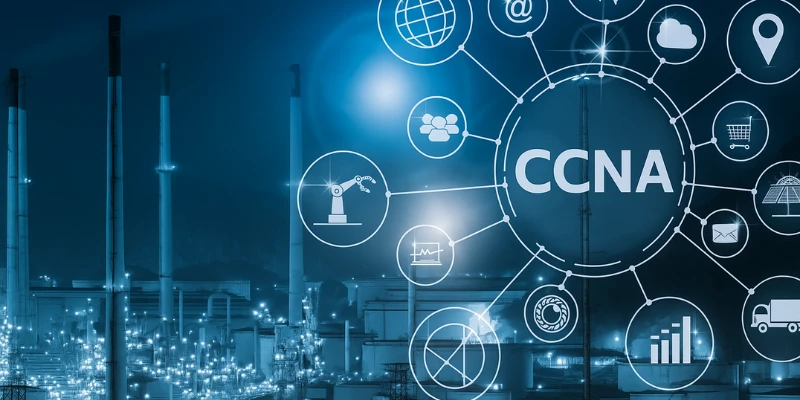
Networking is the foundation of modern communication, allowing devices to exchange data and resources effectively. The Cisco Certified Network Associate (CCNA) certification emphasizes knowing network components and how they work together to produce strong networks. This guide delves into important network components and their roles in depth.Network components are both physical and logical devices that enable computers, servers, and other devices to connect. They include routers, switches, firewalls, cables, and other components. Understanding these components is critical for CCNA network design, management, and troubleshooting.Enrolling in CCNA Course in Kanchipuram at FITA Academy to gain knowledge in ccna
There are two types of networks: LANs (Local Area Networks) and WANs. LANs link devices in a narrow area, such as an office or a school, whereas WANs connect devices across cities or nations.
Routers: The Network Traffic Managers
Routers are devices that forward data packets between networks. They determine the best path for data to reach its destination using routing protocols such as OSPF, EIGRP, and RIP.
Functions of Routers:
- Inter-network communication: Connects LANs to WANs.
- Traffic management: Directs data efficiently to avoid congestion.
- Security: Filters traffic using access control lists (ACLs).
Switches: The Efficient Data Distributors
Switches, which connect devices within a LAN, function at Layer 2 (Data Link Layer). Unlike hubs, switches provide direct paths between devices, eliminating accidents and increasing speed.
Functions of Switches:
- Data forwarding: Uses MAC addresses to deliver data to the correct device.
- VLAN creation: Segments networks for better organization and security.
- Bandwidth optimization: Reduces network congestion by managing traffic effectively.
Hubs and Access Points: Basic Connectivity Devices
Hubs are basic devices that send data to all connected devices, making them inefficient for current networks, CCNA Course in Tirunelveli, and they are mainly obsolete, although they are still helpful in small settings for learning.
Access Points (APs) connect wireless devices to wired networks via Wi-Fi technology. They are critical for enabling mobility and decreasing reliance on wires.
Functions of Access Points:
- Wireless connectivity: Connect laptops, smartphones, and IoT devices to the network.
- Network expansion: Extends the coverage of wired networks wirelessly.
- Security management: Supports WPA3/WPA2 encryption and authentication.
Firewalls: Network Protectors
Firewalls are security devices that monitor and manage both incoming and outgoing network traffic. They might be hardware, software, or cloud-based.
Functions of Firewalls:
- Traffic filtering: Blocks unauthorized access based on IP addresses, protocols, or ports.
- Threat prevention: Protects against malware, viruses, and cyberattacks.
- Network monitoring: Logs network activity for security auditing.
Network Cables and Media
The physical layer of a network relies on cables and media to transmit data. Different types of cables serve different purposes, join CCNA Course in Dindigul
- Ethernet cables (Cat5e, Cat6, Cat6a): Common for wired LANs.
- Fiber optic cables: Provide high-speed, long-distance connectivity.
- Coaxial cables: Used in older networks or for internet service connections.
Functions:
- Data transmission: Transfer data signals between devices.
- Network reliability: Ensure minimal interference and maximum bandwidth.
Network Interface Cards (NICs)
A Network Interface Card (NIC) is a hardware component that allows a computer or device to communicate via a network. NICs may be wired or wireless.
Functions of NICs:
- Device identification: Provides a unique MAC address.
- Data conversion: Converts data from a device into network-compatible signals.
- Connectivity: Facilitates communication with switches, routers, and APs.
Modems: Internet Gateways
Modems connect home or office networks to the Internet by converting digital data from a computer into analog signals that can be transmitted via phone lines, cable systems, or fiber networks.
Functions of Modems:
- Signal conversion: Digital to analog (modulation) and analog to digital (demodulation).
- Internet access: Provides connectivity to the wider internet.
- Basic firewall: Many modern modems include security features.
Servers: Centralized Resource Managers
Servers are powerful computers that provide resources, services, and data to client devices on a network.
Functions of Servers:
- File storage and sharing: Central repository for files and documents.
- Application hosting: Runs software applications accessible by clients.
- Network management: Manages users, permissions, and traffic in enterprise networks.
Wireless Controllers
Wireless LAN controllers (WLCs) manage multiple access points in a network, ensuring seamless connectivity, load balancing, and centralized security policies.
Functions of Wireless Controllers:
- Centralized management: Configure multiple APs from a single console.
- Seamless roaming: Ensures smooth transitions for wireless devices across APs.
- Security enforcement: Applies consistent encryption and access policies.
Network Monitoring Tools
Monitoring tools are software or hardware solutions for tracking network performance, detecting faults, and optimizing traffic flow,enroll CCNA Course in Chandigarh
Popular Network Monitoring Functions:
- Traffic analysis: Monitors bandwidth usage and bottlenecks.
- Fault detection: Alerts administrators about device failures.
- Performance reporting: Provides insights for planning network upgrades.
Also check: Top 3 Job Profiles After CCNA Certification
